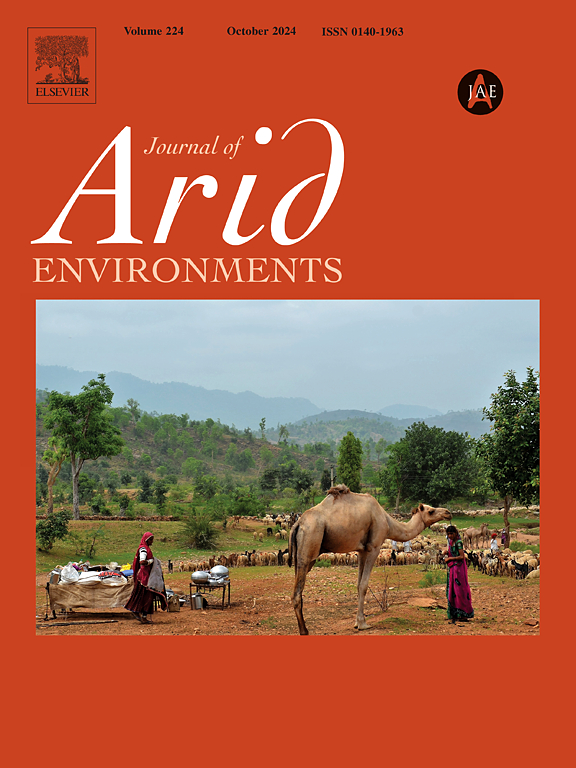促进作用及其对活体岩仙人掌(Ariocarpus retusus)生命速率的影响
IF 2.6
3区 环境科学与生态学
Q2 ECOLOGY
引用次数: 0
摘要
有营养的植物可改变其树冠下的环境条件,促进新植株的生长并使受保护植物受益。这种影响会随着交互作用植物的生命周期阶段和特征而变化。我们进行了一项人口统计学研究,以了解护卫植物在两年内对仙人掌(仙人掌科)Ariocarpus retus 生命速率的影响。我们确定了仙人掌的位置(空地、生物哺育植物或非生物哺育植物),并计算了它们的相对增长率(RGRs)。种群数量稳定,在研究的两年中都有增长趋势(λ = 1.008 和 λ = 1.044)。停滞期的敏感性最高,种子到幼苗过渡阶段的脆弱性最大。RGR更多取决于生命阶段而不是微生境,幼苗和幼体的RGR较高,而成体的RGR则降到零以下。与生物哺育者的联系很少,但会降低死亡率,有利于停滞。Fouquieria splendens、Hechtia sanchezii 和麻风树(Jatropha dioica)在其树冠下支持许多仙人掌,尽管它们不是优势物种。哺育植物对繁殖力的影响各不相同,与 Turnera diffusa 相关的仙人掌繁殖力很高。该物种的叶片物候可能会通过落叶决定土壤养分的可用性,从而为繁殖提供资源。本文章由计算机程序翻译,如有差异,请以英文原文为准。
Facilitation and its effect on vital rates of the living rock cactus Ariocarpus retusus
Nurse plants modify environments conditions under their canopies, facilitating recruitment and benefiting protected plant. This effect varies with the life cycle stages and characteristics of interacting plants. We conducted a demographic study to understand the impacts of nurse plants on the vital rates of Ariocarpus retusus (Cactaceae) during two years. We identified the location of the cacti (open space, biotic nurse or abiotic nurse) and calculated their relative growth rates (RGRs). The population is numerically stable, with a tendency for growth in both years of study (λ = 1.008 and λ = 1.044). The highest sensitivity was in stasis, and the greatest vulnerability was in the seed to seedling transition. The RGR depends more on life stage than on microhabitat, it is high in seedlings and juveniles but drops below zero in adults. The association with biotic nurses is rare but reduces mortality and favors stasis. Fouquieria splendens, Hechtia sanchezii and Jatropha dioica supports many established cacti under its canopy, although they are not dominant species. Nurse plants' effects on fecundity vary and there is high fecundity in cacti associated with Turnera diffusa. Leaf phenology of this species may determine soil nutrient availability through leaf litter, providing resources for reproduction.
求助全文
通过发布文献求助,成功后即可免费获取论文全文。
去求助
来源期刊

Journal of Arid Environments
环境科学-环境科学
CiteScore
5.70
自引率
3.70%
发文量
144
审稿时长
55 days
期刊介绍:
The Journal of Arid Environments is an international journal publishing original scientific and technical research articles on physical, biological and cultural aspects of arid, semi-arid, and desert environments. As a forum of multi-disciplinary and interdisciplinary dialogue it addresses research on all aspects of arid environments and their past, present and future use.
 求助内容:
求助内容: 应助结果提醒方式:
应助结果提醒方式:


